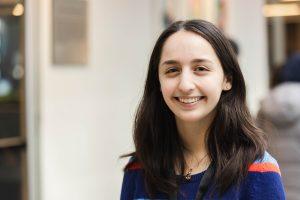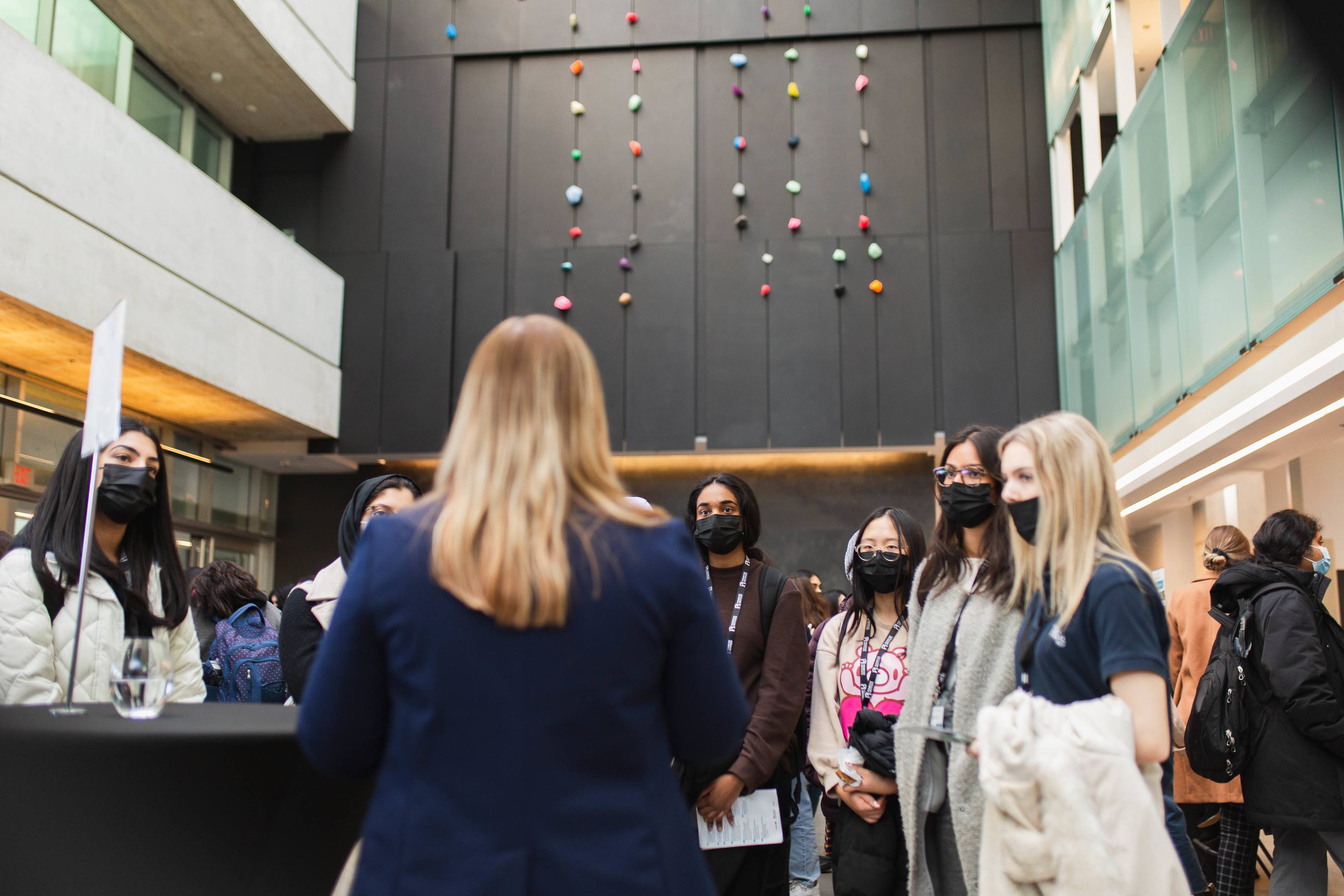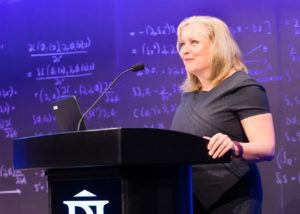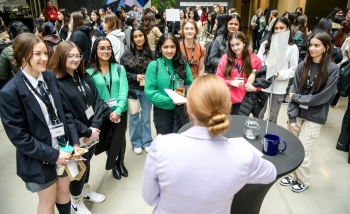What does a scientist look like? It looks like you
Attendees of this year’s Inspiring Future Women in Science Conference came away with one message above all others: when it comes to career opportunities in science, there is no shortage of possibilities.
Being a scientist can mean wearing many different hats, and it’s not necessary to pigeonhole yourself.
There’s no better proof of this than the day’s first keynote speaker, Cylita Guy, who started her career as an ecologist, then became an insurance data scientist, and recently authored a children’s book. Along the way, she’s worked at the Ontario Science Centre and appeared on TV to talk about animal science.
Guy hopes that by sharing her experiences, she will help the more than 100 high schoolers see a future for themselves in science, in whatever form they see fit. But she also found inspiration herself.
“I know that we’re here to share with these women what we do to inspire them into careers, but I'm feeling very inspired by some of the speakers and panelists."
Guy was in good company. She was joined onstage at the event by astrophysicist Ghazal Geshnizjani, and cryptographic security expert Melanie Anderson. A panel composed of an electrician, a pharmaceutical chemical engineer, a software designer, and a climate scientist followed, broadening the scope of career possibilities presented to the attendees.

“It was the best experience for me,” said Elisa Torres Durney, a 17-year-old senior high school student visiting from Chile. “It is important to promote more females in STEM fields, especially because of the gender gap. The fact that there are so many young women my age who are here at this event is wonderful.”
Torres Durney was invited to the Perimeter as the founder of an organization called Girls in Quantum, which aims to prepare students from around the world for careers in quantum computing.
She wants to go into biomedical engineering, but sees quantum computing playing a role. “I look forward to helping people from the perspective of putting biology and technology together. Quantum computing is an emerging field, and I believe we need to start learning more about it.”
Not everyone is so sure about their future plans as early as high school, and the goal of the event was to showcase the breadth of options that exist. It can be hard to imagine all the careers paths out there, especially if you don’t see anyone who looks like you doing them. The annual conference offers visibility and representation which might otherwise be lacking.
“Events like this are super-important because it really helps youth understand that a lot of careers in science are feasible to them. It helps them brainstorm the kind of different potential careers they could go into,” said Ana Sofia Barrows, Perimeter’s Senior Manager for Equity, Diversity and Inclusion.

One of the highlights of the event was a whirlwind ‘speed mentoring’ session, where students had the chance to ask questions of a dozen women in a dozen professions, to see what life might be like were they to go into their field.
“It is so amazing to be here surrounded by all of these talented women. It is absolutely awesome,” said Madeleine Alma, a Southwood Secondary School student in Cambridge who was drawn towards the theoretical physicists in the room.
“I'm so into quantum mechanics because I've always found it quite beautiful and also so bizarre. With the language of mathematics, I can answer the most unknown questions about the universe,” she said.
Alma has attended Perimeter’s public lectures in the past and has met a few professors, but she has noticed there are not a lot of women in the field. That isn’t going to hold her back though. “I will keep on pushing, because one day, I might be working here."
Are there still challenges ahead for women in science? Yes, says keynote speaker Melanie Anderson, but the tide is turning. “As a woman who's worked in STEM in a very male-dominated industry for many years, I'm starting to get questions from my male colleagues that I never got before about how to be allies. And I think that's a really critical turning point."
The panelists offered advice about how to deal with challenges in the workplace, including building and maintaining social support networks, either virtually or with friends and family, and being open to pursuing new opportunities until you find something you’re passionate about.

Linda Hasenfratz, chief executive of Linamar Corporation, a Guelph-based manufacturing company that sponsored the event, urged students to take advantage of experiential learning opportunities like co-op and internships, as they offer a chance to try out different career paths without having to commit long term. “You can do all kinds of different things and experiment a bit with different fields and different careers, to see what fits for you,” she said.
Students at the event showed a keen desire to make a fulfilling future for themselves – and also to make a positive difference in society. They asked discerning questions about the future of climate science and how individual careers can help make the world a better place. It’s hard to predict the future of the workforce, as new challenges and opportunities are constantly creating jobs that didn’t exist a decade before. But if the passion of these students is anything to judge by, there is massive untapped potential for individual action to drive future generational change.
How they get there is up to them.
“Careers are a journey,” said Hasenfratz. The path may have many twists and turns, “but what’s amazing is that you learn something at each one of those junctures, and in the end, it makes you who you really are.”

À propos de l’IP
L'Institut Périmètre est le plus grand centre de recherche en physique théorique au monde. Fondé en 1999, cet institut indépendant vise à favoriser les percées dans la compréhension fondamentale de notre univers, des plus infimes particules au cosmos tout entier. Les recherches effectuées à l’Institut Périmètre reposent sur l'idée que la science fondamentale fait progresser le savoir humain et catalyse l'innovation, et que la physique théorique d'aujourd'hui est la technologie de demain. Situé dans la région de Waterloo, cet établissement sans but lucratif met de l'avant un partenariat public-privé unique en son genre avec entre autres les gouvernements de l'Ontario et du Canada. Il facilite la recherche de pointe, forme la prochaine génération de pionniers de la science et communique le pouvoir de la physique grâce à des programmes primés d'éducation et de vulgarisation.


